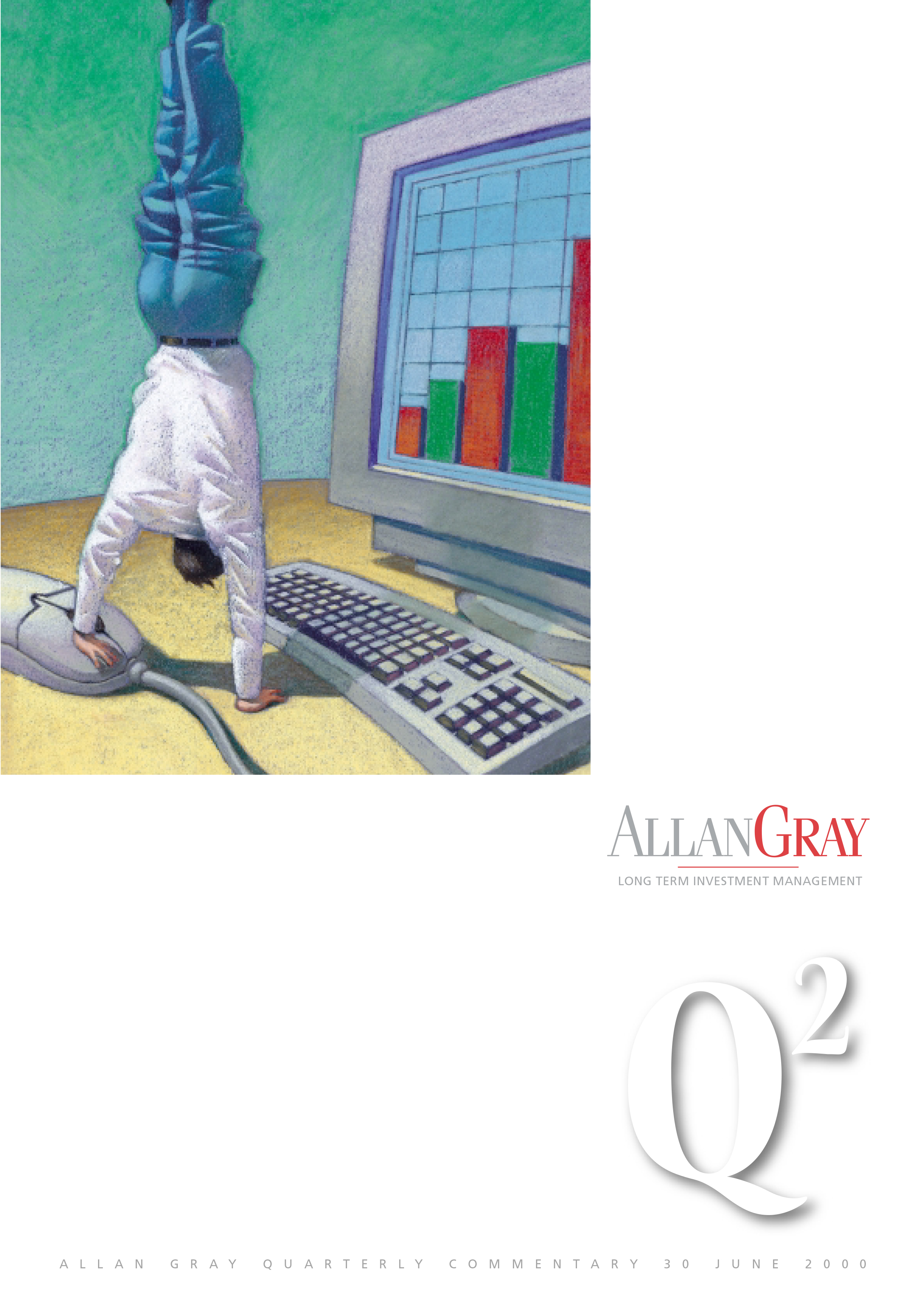The 90-day pause following US President Donald Trump’s “Liberation Day” announcements on 2 April has come to an end, with tariffs kicking into place on 1 August. South Africa must now face the reality of a 30% blanket tariff on all exports to the US – except for some items critical to the US economy, such as certain base and precious metals (for now). This is a political and economic move that will have long-lasting consequences.
There are lessons and questions that have surfaced in the wake of the Trump tariff tornado and the resulting market rollercoaster. Perhaps the most important lesson – which you hear from us time and again: Guard against making long-term investment decisions based on short-term market movements; this is a sure way to lock in losses.
This has been keenly demonstrated this quarter. As portfolio manager Jithen Pillay wrote in his latest Allan Gray Equity Fund commentary, while end-quarter closing stock market levels suggest nothing but good news, it’s been a wild ride. Over the four days after Trump’s April tariff announcement, the S&P 500 fell 12%. A subsequent pause in implementation saw the index recover all its losses by 2 May, only to power ahead 25% from the bottom on the back of a trade deal with China and a negotiated ceasefire in the Middle East. Both the MSCI World Index and S&P 500 ended the second quarter at all-time highs. In South Africa, things were even more extreme: The FTSE/JSE All Share Index (ALSI) fell 9% two days after 2 April, fully recovering over the next eight days and then reaching an all-time high in mid-June (a 20% gain from the Liberation Day bottom). Disinvesting during the dip would have been very costly.
Amid the turbulent market conditions, you may be tempted to eliminate risk altogether – but eliminating risk also reduces the ability to generate superior long-term returns.
As a reminder, our investment approach and philosophy do not ebb and flow with the tides of the market; we continue to focus on fundamental value in our bid to construct portfolios that will deliver long-term returns. To illustrate the application of our investment process, Andrew McGregor delves into Tiger Brands, which for years had been languishing, but seems to be returning to form. He investigates whether this consumer brands giant is reclaiming its stripes, noting that if the turnaround proceeds as planned, it is likely that there is hidden value in the Tiger that is not currently priced in.
Taking stock
As we catch our breath after a turbulent first half of the year, we continue to navigate a range of complex challenges – some of which we explore in this edition of our Quarterly Commentary:
The rise of gold
Of course it is too soon to have any conclusive answers, but the dollar’s safety as a neutral asset has been broadly reassessed. Gold’s ancient role – as a reserve of last resort – is finding new relevance. In his article that examines the global monetary order, Umar-Farooq Kagee investigates whether we are at a seminal event in monetary history, and shares the investment case for AngloGold Ashanti.
The US as a not-so-sure bet
For a long time, the US has been seen as a sure bet, but as Adam Karr, president of our offshore partner, Orbis, notes in his piece, US equity valuations remain elevated overall, and portfolios concentrated in last decade’s winners are looking vulnerable. Although America still offers compelling opportunities, selectivity is crucial. Orbis’ decision to remain underweight US equities has proven to be the right call this year. However, this doesn’t mean they have no US exposure; while they have focused away from the megacaps, roughly 40% of the Orbis Global Equity Strategy is in US stocks, anchored by high-conviction holdings. We discussed some of the opportunities in a podcast recorded with Orbis in early June.
Heightened uncertainty
While uncertainty feels heightened right now, the future is in fact always uncertain. Your level of comfort with uncertainty is an indicator of how much risk you may be comfortable taking on.
For those investors who want some stock market exposure, but are more risk-averse, the Allan Gray Stable Fund has proven to be a good option. Over the Fund’s 25-year history, when stock market returns have been weak or negative, the Fund has protected investors. Conversely, during periods of equity market strength, the Fund has benefited clients, generating returns well ahead of its benchmark. Radhesen Naidoo and Danielle Nissen reflect on the Fund’s history, its objectives, and why it remains relevant in today’s uncertain landscape.
… it is not only our Stable Fund’s 25th anniversary – it is also the 25th anniversary of our Quarterly Commentary.
Risk of loss versus risk of missing out
Amid the turbulent market conditions, you may be tempted to eliminate risk altogether – but eliminating risk also reduces the ability to generate superior long-term returns. Successful long-term investing is about balancing the fear of losing money (the risk of loss) and the fear of missing out (the risk of not being invested). In this quarter’s Investing Tutorial, Nomi Bodlani suggests some questions you can ask to assess how we are doing in this regard.
It’s time to attend to your personal finance admin
Tax-filing season has begun. To assist you with your tax returns, we have some useful information on our website, including answers to some frequently asked questions. It is also a good opportunity to attend to other matters, such as updating your beneficiary nominations for your retirement funds (which you can do via your Allan Gray Online account). Ian Barow, one of the trustees of the Allan Gray retirement funds, reminds us about the laws governing retirement fund death benefit payouts, and the importance of making beneficiary nominations and keeping them up to date.
25th anniversary edition
Interestingly, it is not only our Stable Fund’s 25th anniversary – it is also the 25th anniversary of our Quarterly Commentary. Our first chief operating officer, Mark Herdman, introduced the magazine back in Q2 2000, allowing us to share our long-term investment views. A copy of the very first cover is shared with you below. The design of the publication has changed over time, but our message has remained consistent. Every edition published is available via our Literature library for you to peruse.
As we did 25 years ago, we appreciate your continued engagement and trust.

To view our latest Quarterly Commentary or browse previous editions, click here.
